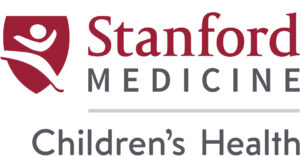Targeted therapy has become a holy grail in pediatric medicine. The goal is to design new drugs that target specific molecules and genes that cause childhood disease. Targeted drugs have proven more effective than radiation or chemotherapy for treating certain cancers, and have fewer debilitating side effects, such as nausea, weight loss, and fatigue.
At the Stanford University School of Medicine, Michael Cleary, MD, director of the Pediatric Cancer Biology Division, is conducting pioneering research that could lead to targeted therapies for leukemias, lymphomas, and other childhood cancers. But for Cleary and other scientists, securing financial support for basic research in pediatric oncology is a constant challenge.
“Relatively few children are diagnosed with cancer,” says Cleary, the Lindhard Family Professor in Pediatric Cancer Biology and professor of pathology. “It doesn’t make financial sense for a big pharmaceutical company to make a large investment for a small number of cases. So it’s up to academic institutions to do basic research that creates new therapies for kids.”
For the thousands of families whose lives have been turned upside down by cancer, every dollar that goes to basic research is a dollar well spent. Just ask Simone and Tench Coxe of Palo Alto. In 2003, the Coxes brought their 6-year-old son, also named Tench, to Lucile Packard Children’s Hospital for severe stomach pain and a swollen lymph node in his neck.
Tests revealed that Tench had Burkitt lymphoma, a cancer of the lymphatic system. If treated early, kids with Burkitt have an 85 percent survival rate. Within days of his diagnosis, he underwent the first of four rounds of intensive chemotherapy at Packard.
The four-month regimen was difficult for the Coxe family. “For 25 or 30 nights, we took turns sleeping at the Hospital,” Simone recalls. “It’s a tough situation for the families who are there, but the staff is unbelievable. They really make a difference.”
The chemotherapy was successful, and today, Tench is cancer-free. He’s in seventh grade and enjoys basketball, soccer, and reading about the history of ancient Greece and Rome.
“We were fortunate to be near such a world-class hospital,” says his father. “But ‘world-class’ doesn’t happen overnight. Simone and I used to take health for granted. Then we realized, holy mackerel, this could happen to anyone’s child at any time. That’s when we decided we really wanted to support pediatric cancer research.”
Since 2004, the Coxe family has supported the work of Cleary and the Pediatric Cancer Biology Division. “Thanks to their gifts, we’ve been able to hire additional postdoctoral fellows in our lab to do innovative experiments that are otherwise difficult to get funded,” Cleary says.
The Coxes’ generosity has already led to one major result. A postdoctoral researcher in Cleary’s lab recently discovered that up to 10 percent of all pediatric blood cancers are dependent on an enzyme associated with Alzheimer’s disease and diabetes, which affect millions of people worldwide. It’s the kind of discovery that is likely to pique the interest of the pharmaceutical industry, Cleary says.
“I’ve met with the Coxes, and I’m quite impressed with their understanding of the need to support basic academic research as a foundry for new pediatric therapies,” he adds.
In 2010, Tench and Simone augmented their earlier support with a major commitment to help fund the Packard Children’s expansion project.
“Medicine improves when people invest in it,” Simone says. “We benefited from all those years of research in lymphoma. Looking toward the future, we want Packard Children’s Hospital to be the best in everything, not only cancer care. It serves the community well, and we’re a part of this community.”


